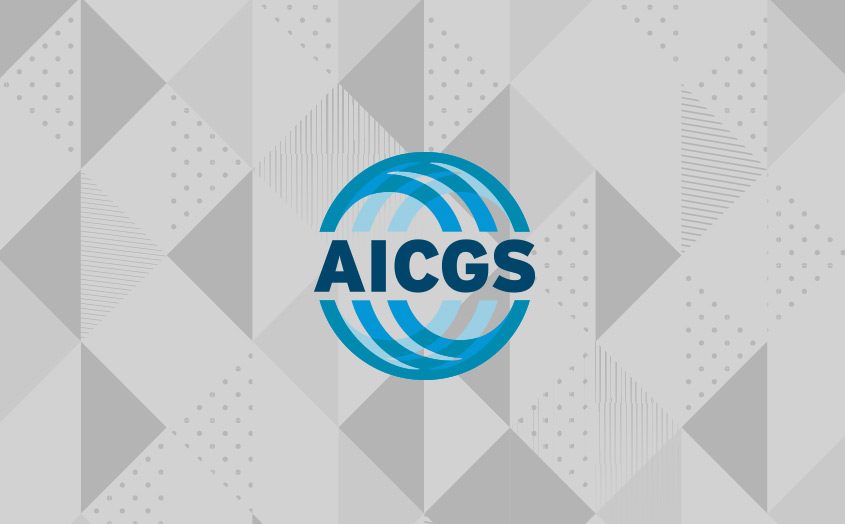
Germany’s Population is Growing and Changing as It Adjusts to New Realities

Susanne Dieper
Director of Programs and Grants
Susanne Dieper is the Director of Programs and Grants at AICGS. She oversees the Institute’s programs and projects within the three AICGS program areas, manages all AICGS fellowships, and is in charge of grant writing. Her current focus is on issues related to transatlantic relations, immigration and integration, diversity, the next generation of leaders, workforce education, and reconciliation. She develops programs that align with the mission of AICGS to better understand the challenges and choices facing Germany and the United States in a broader global arena.
Previously, Ms. Dieper was in charge of organizational and project management at AICGS as well as human resource development and board of trustees relations. Prior to joining AICGS, she worked in transatlantic exchange programs, language acquisition, as well as the insurance industry in Germany.
Ms. Dieper holds an MBA from Johns Hopkins University with a concentration in International Business and an MA in English Linguistics and Literature, History, and Spanish from the University of Cologne. She has completed course work in nonprofit management at Johns Hopkins University.
__
In January, Germany’s Federal Statistical Office (Statistisches Bundesamt) announced that the country’s population is likely growing again—a direct result of an increase in immigration since 2012. The latest preliminary survey results indicate that approximately 82.8 million people lived in Germany at the end of 2016. This is an increase of 0.6 million compared to the previous year and breaks the previous record of 82.2 million at the end of 2002. Final results will be available in May.
If the predictions hold, the results will negate earlier estimates by the Federal Statistical Office indicating an expected decrease in the German population to roughly 68 million by 2060. Instead, Germany now has reason to be optimistic about its future. Not only do these recent statistics include a net immigration balance of 300,000 per year (previous assumptions were between 100,000 and 200,000), but they also include a slightly increased birthrate (from a rate of 1.4 children per woman to a current and predicted future rate of 1.6 children per woman) and an increased life expectancy (83.1 years for women and 78.2 years for men)—all indicative of a stable population growth for Germany for years to come. Net immigration to Germany continues to be essential to its population growth, however, since the birth-to-death ratio remains unfavorable (estimates indicate that in 2016 between 150,000 and 190,000 more deaths than births occurred).
In a Diverse Population, Every Age Counts
Given these trends, a stable German population will no doubt become more diverse as well. In 2015, a record 21 percent of the population had a migration background, the highest number ever recorded. How will Germany deal with an increasingly diverse population? With the rise of anti-immigrant movements, is Germany coming to terms with being an immigration country? Despite this year’s positive report, population growth numbers remain at modest levels. Will they sustain Germany and cure some of its domestic ills, including a substantial skills gap and an aging population? With about 13 million baby boomers set to retire in the next several years, how will Germany afford the increase in pension payments?
The German government recognized the demographic changes the country faces—and the accompanying opportunities and challenges—in a 2011 demographics report, which in 2012 was followed by a demography strategy entitled “Every Age Counts” (“Jedes Alter zählt”). Listing a number of areas where political action is needed, the government, in collaboration with the private sector, social partners, academia, and civil society, created working groups to formulate and provide concrete initiatives for a changing society. To prepare for an aging and diverse population, the government is asking for openness and flexibility from its citizens. The strategy, last updated in January 2015, focuses on increased prosperity and quality of life for all generations (“Für mehr Wohlstand und Lebensqualität aller Generationen”).
Among others, the priorities include:
- the importance of the next generation (“Jugend gestaltet Zukunft”), and
- the potential of workers with a migration background and the creation of a welcoming culture (“Ausländisches Arbeitskräftepotenzial erschließen und Willkommenskultur schaffen”).
The government recognizes that Germany is aging and depends on a diverse populace to sustain itself. Part of doing so requires that Germany be a country of immigration, as Chancellor Angela Merkel called for in 2015. In keeping with these sentiments, the federal government’s latest demographic assessment (published in February 2017) elaborates on the developments and challenges resulting from the recent influx of refugees to Germany. It emphasizes the importance of cohesion and solidarity in a diverse and open society.
Mobilizing Potentials and Strengthening the German-American Partnership
While these demographic assessments focus on domestic priorities, what does a changing population mean for the future of the transatlantic relationship? Even before the new administration in Washington started to raise doubts about the continuation of a solid and unshakeable partnership (the ups and downs the relationship experienced in the early years of the twenty-first century look blissfully harmless compared to what many fear could take a real turn for the worse in the next four years), demographic developments in both countries may usher in an inevitable change. The natural bond between citizens of Germany and the United States that existed in the post-World War II environment has been fading fast. The younger and more diverse generations may not look naturally across the pond in search of a reliable and desirable partner, or even just a place to visit or explore.
Initiatives in both countries exist to try and foster a greater sense of transatlantic community and understanding at the local and at the practical level. For example, university students have access to a number of programs that provide opportunities for extended stays in other countries, and U.S. universities remain a desirable destination for students from Germany. Exchange opportunities are also available for those who forgo a university degree in favor of an apprenticeship program. In June 2015, the U.S. Department of Commerce joined with the Education and Labor departments to sign an agreement with Germany to coordinate workforce development and apprenticeship opportunities in the United States. This agreement strives to build partnerships with German employers and explore cooperation in the area of career and technical training and serves as an example of exchanging best practices in workforce development. In addition, the Congress-Bundestag Vocational Youth Exchange offers graduating high school seniors the opportunity to participate in a training or school program in Germany and gain work experience. Germany is also actively looking for high-skilled Americans who want to work in Germany.
Given the interest of the United States in the German dual education and training system, the skills gap both countries face, and the increased focus from U.S. schools, companies, and colleges to train their workforce for high-skill jobs and provide a pathway to professional careers outside of the four-year college degree, there is fertile ground for exchanges between the two countries. Half of the ten working groups and priorities put forth in the German government’s demography report focus on education and jobs and the potential of its diverse workforce.
Mobilizing the potential of a diverse population and workforce will be priorities in both the United States and Germany in years to come. These two elements need to be considered in the efforts taken by both governments, the private sectors, civil society actors, and educators to help keep the transatlantic bond strong and enduring. The opportunities for cooperation and exchange are there.








